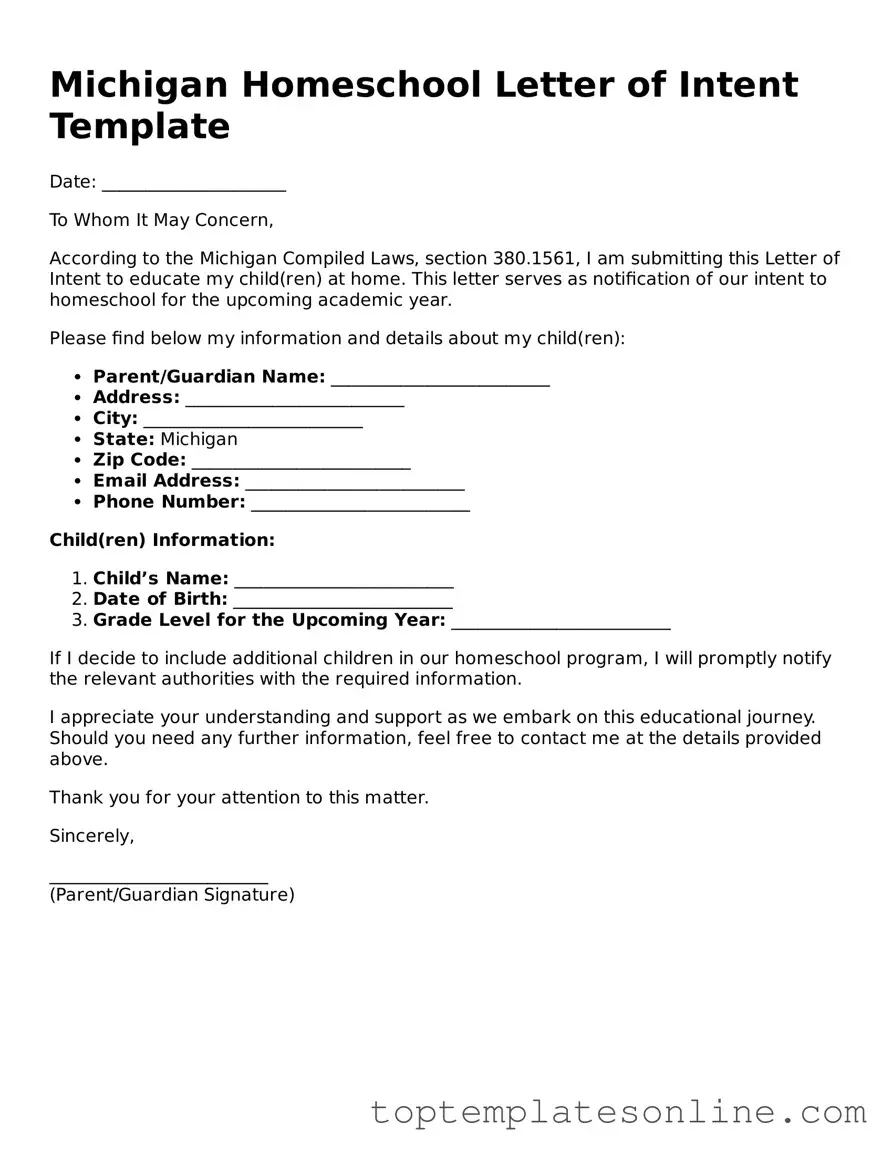For families considering homeschooling in Michigan, understanding the process is essential to ensure a smooth transition from traditional education. One of the first steps in this journey is the Homeschool Letter of Intent form, a crucial document that notifies the local school district of your decision to homeschool your child. This form not only establishes your commitment to providing an educational experience outside of the conventional school system but also outlines your intent to comply with state regulations. By submitting this letter, you affirm your responsibility for your child’s education and set the stage for your homeschooling journey. It’s important to include key details such as your child’s name, age, and the educational curriculum you plan to use. Additionally, while the form itself is straightforward, it serves as a foundational element in establishing your homeschooling framework and maintaining open communication with local education authorities. Understanding these aspects will help you navigate the requirements effectively and embrace the rewarding experience that homeschooling can offer.
